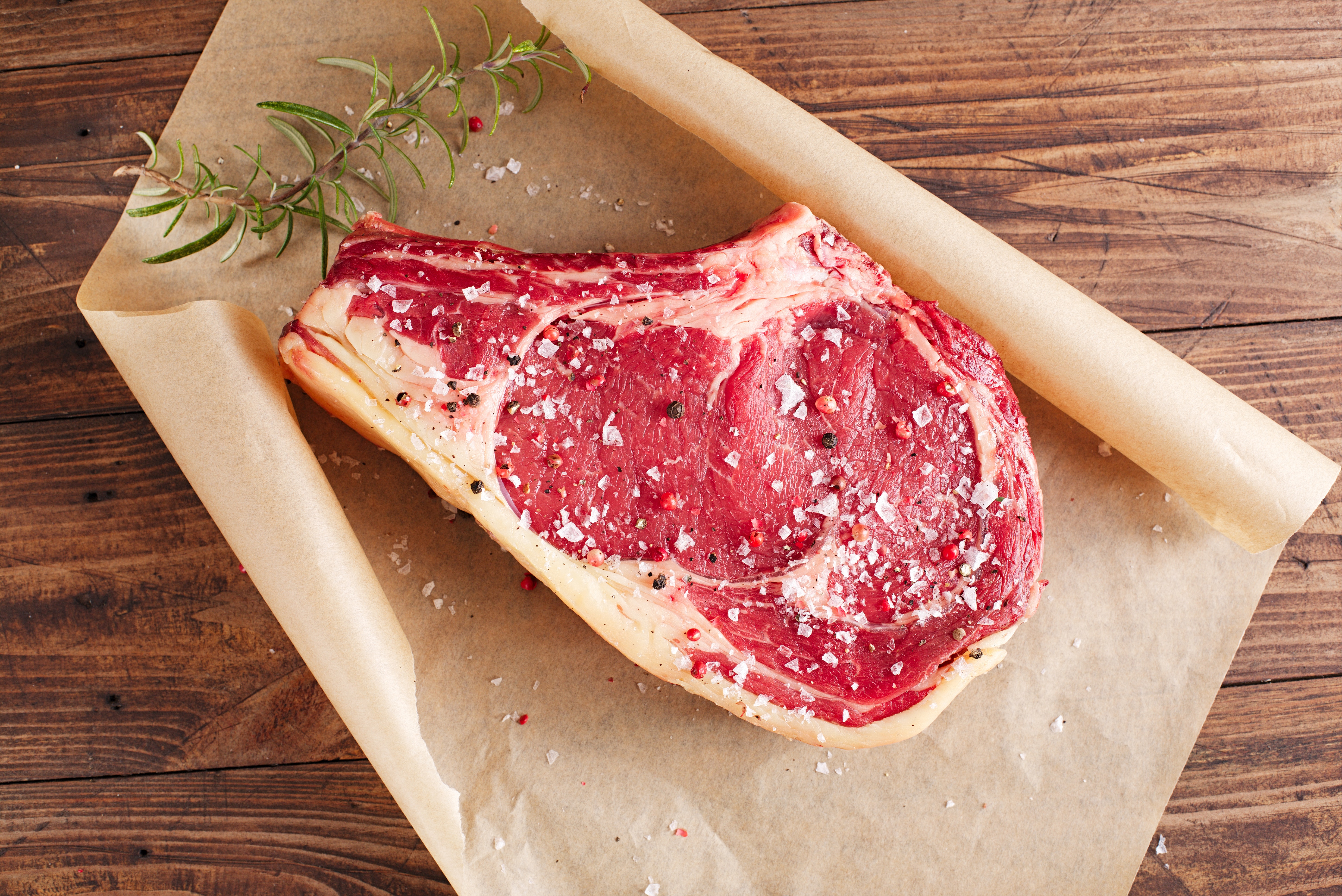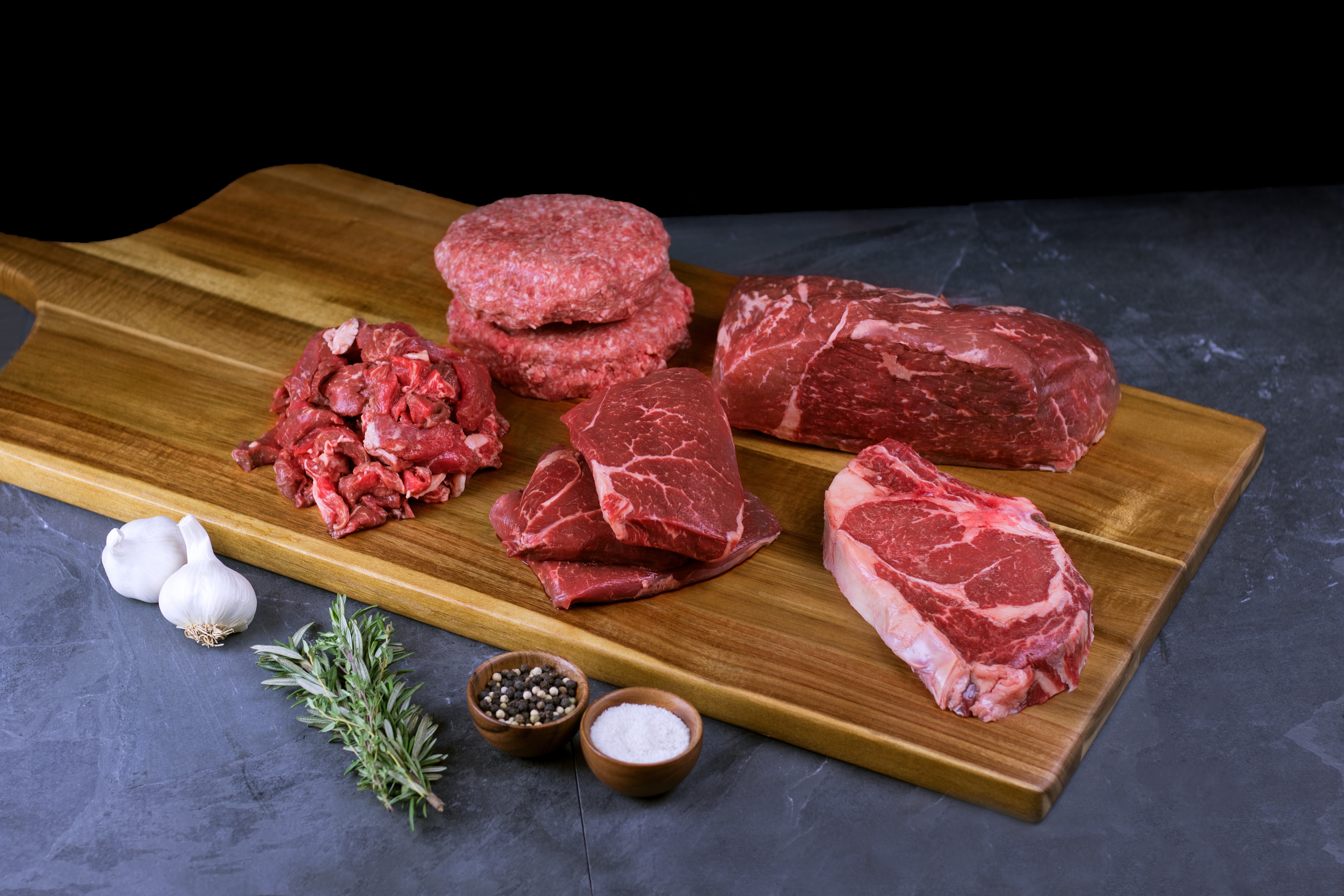
If you've been with Crowd Cow for a while (and even if you haven't), you've probably seen us refer to "well-marbled" meat. But what is marbling and why does it matter?
What is marbling?
Well, marbling refers to the white flecks of intramuscular fat in each cut of meat. Marbling adds a lot of flavor and can be one indicator of how good the beef is. It impacts the tenderness, moistness, and overall flavor and has become one of the most well-known elements of steak evaluation.
The USDA grading system rewards marbling above all else, so the eight "grades" that a cut could receive will prize a heavily marbled cut of meat, regardless of the history or flavor. This results in commercial feedlots forcefeeding grain pellets to fatten the cows faster while keeping them confined to small pens so they don't exert energy or work their muscles.
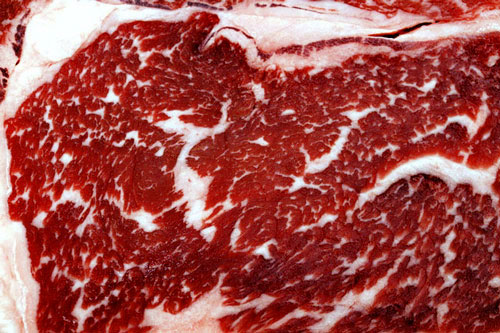
Marbling on meat
In contrast, we value marbling for its contributions to flavor but not at the cost of animal welfare. Our farm partnerships focus on stewardship and care that result in great tasting meat. Marbling is just one way to consider the overall deliciousness of a given steak from a particular farm.
Breed affects marbling
A lot of people claim that cattle doesn't marble well when raised on exclusively grass but that just isn't true. Cattle raised on grain often marble more easily than those who eat only grass, but not every feed is the same and not every breed is the same. Tim and Sarah Haws of Autumn's Harvest raise Murray Grey cattle specifically because they marble well on a pure grass diet, as does Elmer Lapp with Murray Grey and Devon cattle at Burkes Garden Farm. The shift to primarily Black Angus in the late 1970s came about, in part, because Black Angus cattle marble extremely well. Since Black Angus, as a breed, features finely textured marbling, it's a tried-and-true beautifully marbled beef.
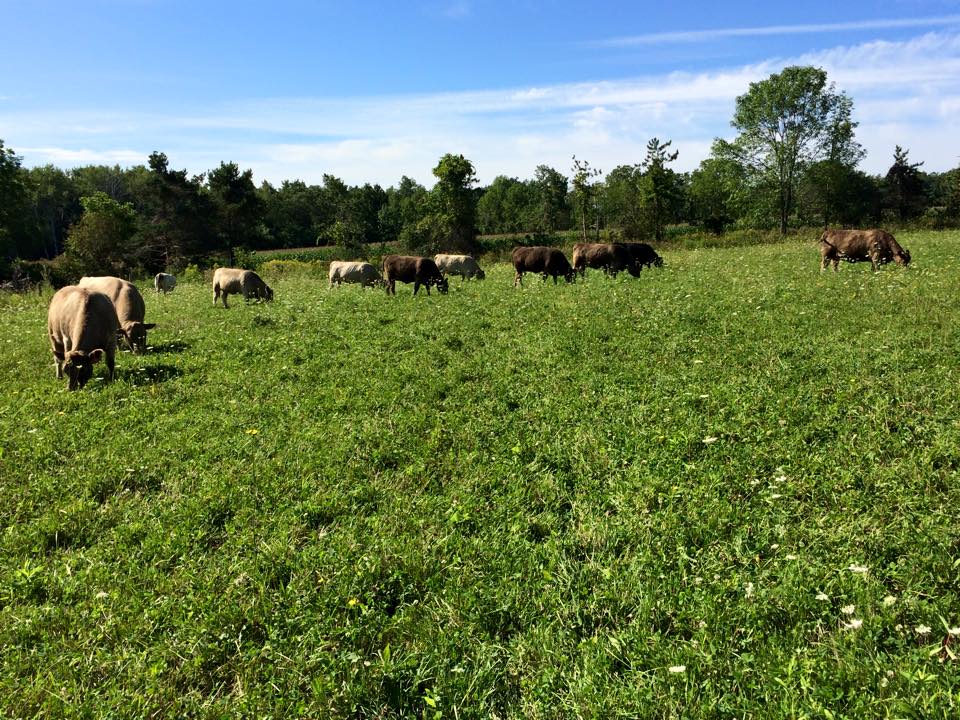
Murray Grey cattle grazing at Autumn's Harvest in New York
However, different cattle breeds metabolize their food differently so the resulting meat varies. The Japanese breed Kuroge-washu (Wagyu beef!) has a higher quantity of intramuscular fat in a finely grained pattern, whereas the Italian breed Piedmontese produces more muscle for a leaner but still incredibly tender beef. Breed can likewise affect the ratios of Omega-3 to Omega-6 fatty acids, which is why Wagyu beef is often called a healthier option—it's higher in Omega-3s.
But it's not just breed, it's also feed. How cattle are fed makes a difference. Manufactured grass pellets favored by industrial feedlots (your grocery store "grass-finished" beef) are unlikely to have the nutrient density of native grasses like Montana Clump Grass at Omega Beef and natural legumes that grow on rangelands and open pastures. Not to mention, those grass pellets can't offer the occasional snack of apple cider vinegar that the herd enjoys at Redger Farms.
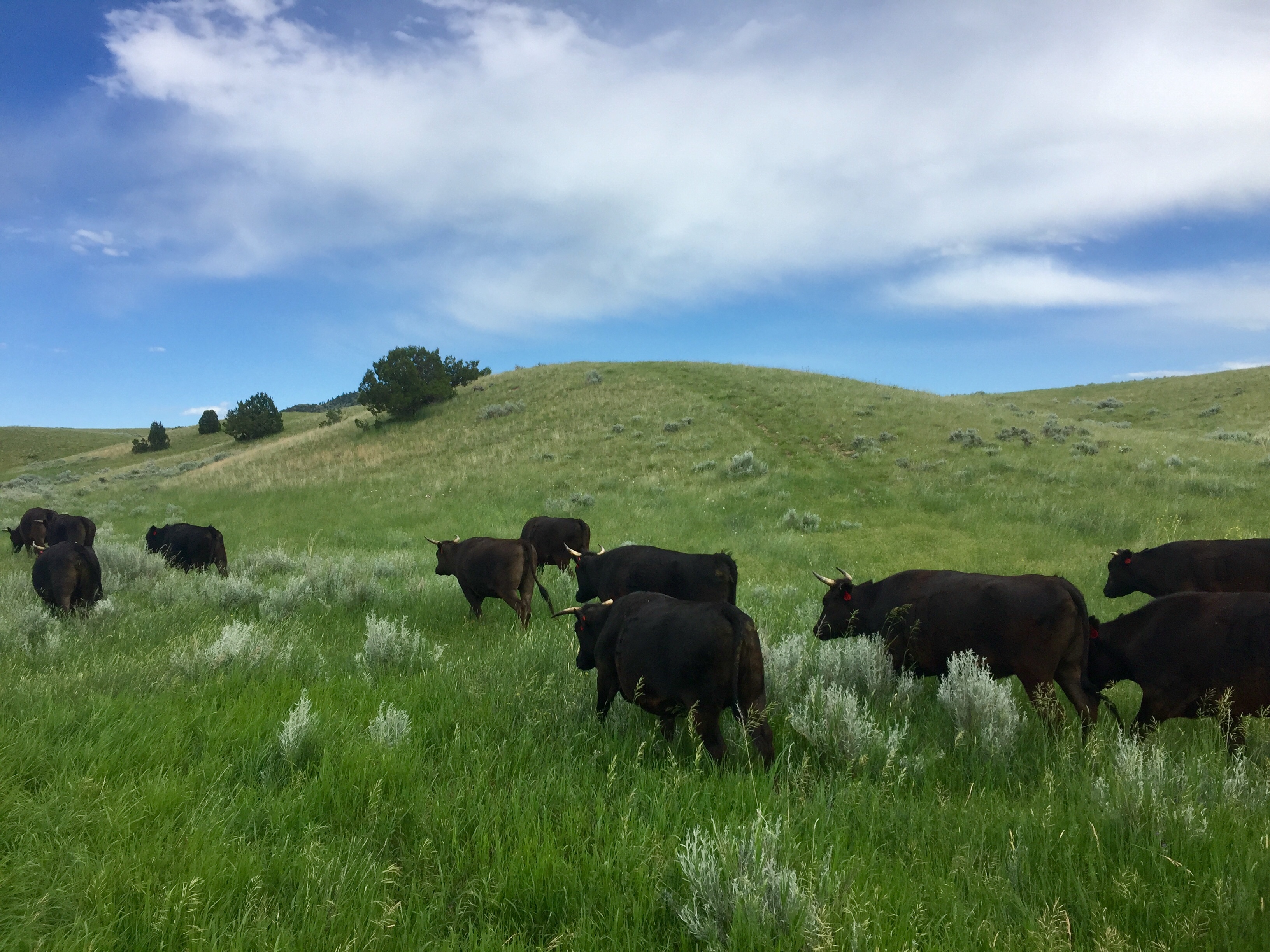
Wagyu cattle grazing at Omega Beef in Montana
Grain-finishing at independent ranches that use locally grown corn, brewers' mash like Cottonwood Ranch, pressed olive peels for Olive Wagyu from Shodoshima, fresh apples, carrots and peas raised by the Hutterian community, and other local specialties is definitely healthier than the mass-produced pellets from industrial feedlots. Oh, and it results in more complex and better tasting beef.
Why do we want marbling?
Because marbling is added fat between the muscle (not the kind that you cut off the edge), it impacts your steak's juicy flavors. Marbling keeps the meat moist during cooking, so natural juices don't evaporate in the pan. Overcooking is marbling's worst nightmare, since it renders all the fat out of the meat, leaving behind a dry and tough steak without the moist flavors we know and love.
The most marbled cuts come from the loin where the muscles were not heavily worked. The most lean and least marbled cuts tend to come from the legs, shoulder, and rump, where the muscles get a lot of exercise and result in much leaner cuts.
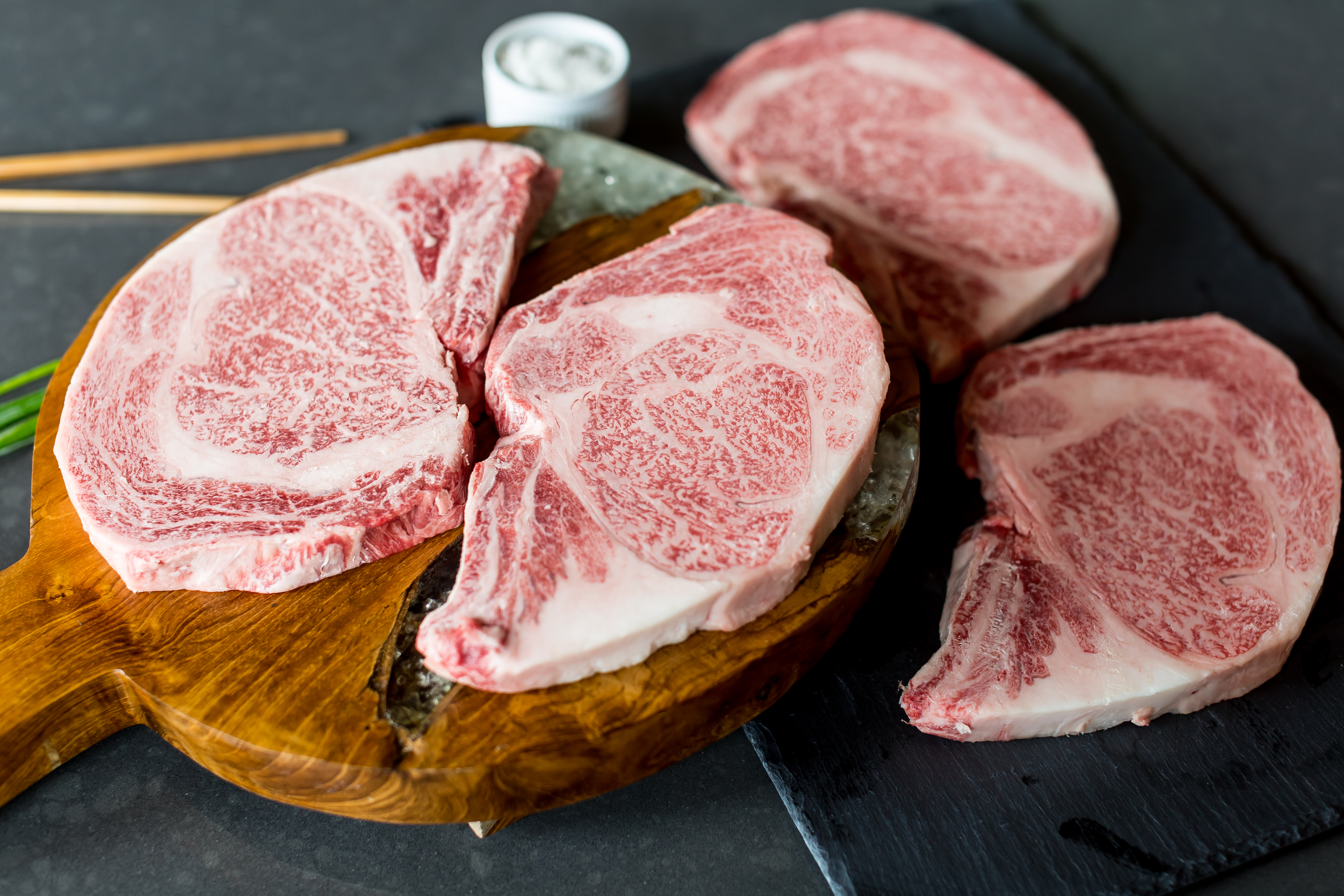
A5 Wagyu from Kagoshima, Japan
Like I said earlier, some breeds are more inclined to marbling than others. Wagyu beef, for example, can be extremely marbled due to its genetics—so much so that it's prized for that marbling! Feed and finishing may also impact marbling, with grass-finished cattle offering a leaner, beefier flavor whereas grain-finished beef are much milder.
Of course, we've been told for years that fats are bad. And while some fats are bad for you, the intramuscular fat of marbling isn't always bad for you. In addition to providing tenderness and flavor to your steak, some breeds (like Wagyu are higher in healthier fats like oleic acid (which has been linked to a reduction in the risk of coronary heart disease).
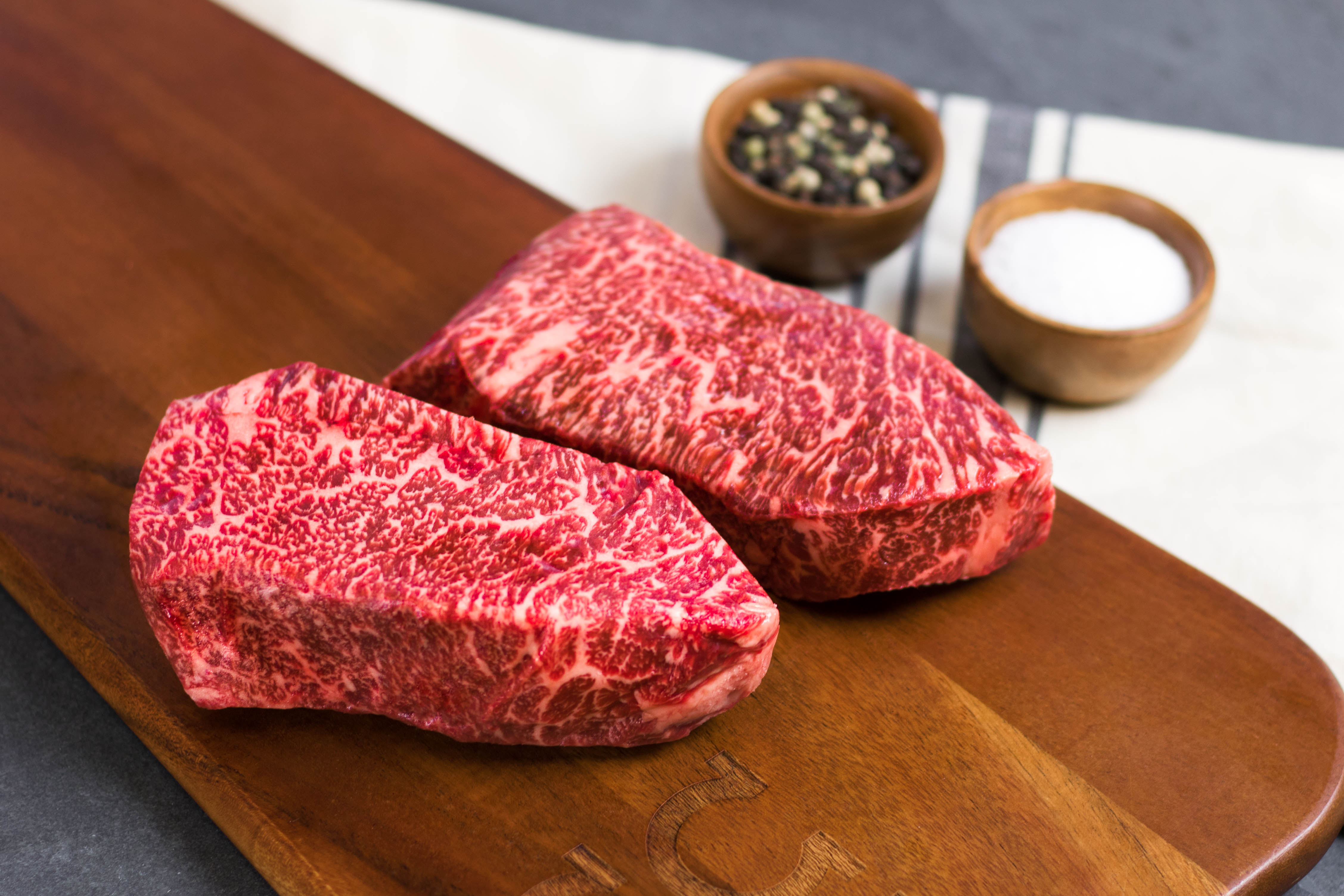
Wagyu Denver Steak from Pacific Rogue Wagyu Cattle Company
How do I evaluate marbling?
I can tell you this much: the USDA grading system can only do so much. The USDA grades beef based primarily on marbling though that's not the only critera. You'll see Prime, Choice, and Select at your local supermarkets and you can more or less call those marbling scores. Anything graded below those three is not generally sold at the supermarket and may be used in ground beef.
Even so, sometimes the USDA grading system can get it wrong. When I cooked my last supermarket steak from the vestiges of my life before Crowd Cow, I made an educated guess about its status and checked the packaging to see how the USDA graded this absolutely gorgeous sirloin. USDA said Choice but, having experienced premium beef at Crowd Cow, I would argue it was Prime. Either way, it tasted good in my steak chili.
It's more personal taste than anything else. If you like the flavor and texture of well-marbled meat, you should continue getting your beef from grain-finishing farms like Hutterian Farm or domestic Wagyu producers like Omega Beef, Kahlig Ranches, and Tebben Ranches. If you prefer a leaner bite, consider grass-finishing farms like Novy Ranches or Redger Farms. Explore taste around the world by trying our A5 Wagyu from Kagoshima, Japan and extremely limited Olive Wagyu from Shodoshima, Japan. Try new breeds with our upcoming Piedmontese ranches, Emtman Brothers Farms and KD Piedmontese.
